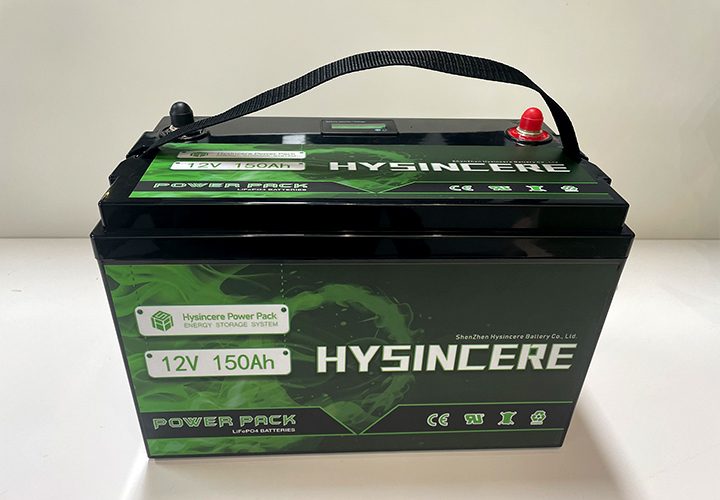source:other news
release time:2023-06-28
Hits:0
Popular:

The types of battery cell explosions can be summarized as external short circuits, internal short circuits, and overcharging. The exterior here refers to the exterior of the battery cell, including short circuits caused by poor insulation design inside the battery pack. When a short circuit occurs outside the battery cell and the electronic components fail to cut off the circuit, high heat will be generated inside the cell, causing some electrolyte to vaporize and propping up the battery shell. When the internal temperature of the battery reaches 135 degrees Celsius, high-quality separator paper will close the fine pores, terminate or almost terminate the electrochemical reaction, cause a sudden drop in current, and the temperature will slowly decrease, thereby avoiding explosion. However, if the closing rate of the pores is too poor, or if the pores do not close at all, the diaphragm paper will cause the battery temperature to continue to rise, causing more electrolyte to vaporize, ultimately breaking the battery shell, and even increasing the battery temperature to cause the material to burn and explode. The internal short circuit is mainly caused by the burrs of copper and aluminum foils penetrating the diaphragm, or the dendritic crystals of lithium atoms penetrating the diaphragm. this
Small needle shaped metals can cause micro short circuits. Due to the fact that the needle is very thin and has a certain resistance value, the current may not be very high. Copper aluminum foil burrs are caused during the production process, and the observed phenomenon is that the battery leakage is too fast, which can be mostly detected by the cell factory or assembly factory. Moreover, due to the small burrs, they can sometimes be burned off, causing the battery to return to normal. Therefore, the probability of explosion caused by micro short circuits in burrs is not high. This statement can be seen from the fact that there are often defective batteries with low voltage shortly after charging in various battery cell factories, but there are few incidents of explosions that receive statistical support.
Therefore, the explosion caused by internal short circuits is mainly caused by overcharging. Because after overcharging, needle like lithium metal crystals are everywhere on the electrode, puncture points are everywhere, and micro short circuits are happening everywhere. Therefore, the temperature of the battery will gradually increase, and finally the high temperature will cause the electrolyte to gas. This situation, whether it is due to excessive temperature causing material combustion and explosion, or the shell being first broken, causing air to enter and undergo intense oxidation with lithium metal, is the end of the explosion. However, the explosion caused by internal short circuits caused by overcharging may not necessarily occur at the time of charging. It is possible that consumers will terminate charging and take their phones out of the house before the battery temperature is high enough for the materials to burn and the gas generated is not enough to break through the battery casing. At this point, the heat generated by numerous micro short circuits slowly increases the temperature of the battery, and after a period of time, an explosion occurs. The common description among consumers is that when they pick up their phone, they find it very hot, and after throwing it away, it explodes.
Based on the types of explosions mentioned above, we can focus on preventing overcharging, preventing external short circuits, and improving the safety of the battery cell. Among them, overcharging prevention and external short circuit prevention belong to electronic protection and are closely related to battery system design and battery assembly. The key to improving the safety of battery cells is chemical and mechanical protection, which is closely related to battery cell manufacturers.
Read recommendations:
lithium ion golf cart batteries manufacturer
best solar generator for home backup
Lithium Replacing Lead-Acid LiFePo4 Battery Pack 12V 200Ah
Lithium secondary battery.solar powered generator for home

Last article:What are the usage areas of lithium-ion batteries?
Next article:Battery System Design.12v 100ah deep cycle battery
related suggestion
solar generator for camping
2023-03-20lifepo4 battery 12v maker
2023-04-07lithium deep cycle marine battery price
2023-03-22deep cycle trolling motor battery sales
2023-04-07solar power battery storage wholesale
2023-04-07lifepo4 24v maker
2023-04-07solar powered generator for home
2023-05-08solar power station
2023-05-08best solar generator for home backup
2023-05-08best portable solar generator
2023-05-08deep cycle solar battery
2023-05-08solar generator for house
2023-05-0820kwh 30kwh 40kwh High Power Lithium Battery 307V 100Ah For Solar Energy Storage System
2023-02-14Lithium Ion Battery 18650 Pack 10.8V 3000mAh
2025-04-1021700 3.7V Lithium Ion Battery 4000mAh 10C
2025-06-053.7V 104060 3000mAh Lipo Battery
2025-05-1651.2V Modular Stacking Rack Mount Energy Storage System
2022-10-19The Way to Reduce Battery Costs: Prioritizing Scale and Recycling Resources.portable power station with solar panel
2023-08-07Molicel 21700 Battery Series Review: P42A, P45B, and P50B for High-Performance Applications
2025-05-27Can You Put 48V Batteries in a 36V Golf Cart?
2025-05-22Method of selecting and using automobile battery.deep cycle trolling motor battery
2023-03-13Advancing Energy Storage: Key Trends and Innovations in 2024
2025-03-13Lead carbon battery and lithium ion battery on the market which good?
2022-11-0148V modular iconic iron phosphate battery.portable power station with solar panel
2023-05-18What are the differences between polymer batteries and lithium-ion batteries through science popularization.solar powered generator for home
2023-09-13Common parameters of lithium battery.best batteries for off grid solar
2023-06-10The high price of new energy vehicles stems from the power lithium batteries.lifepo4 battery 12v 100ah
2023-08-09